7 insights into community-based mental health responses to COVID-19
Jul 16, 2020
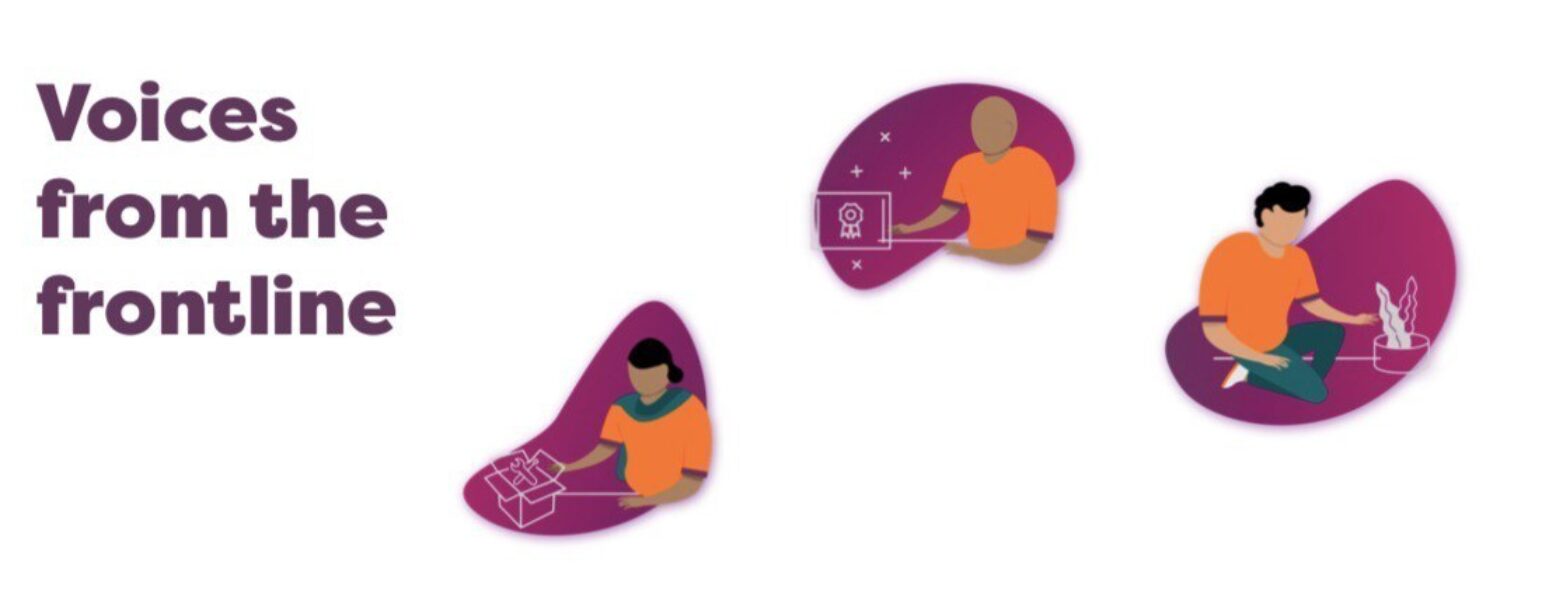
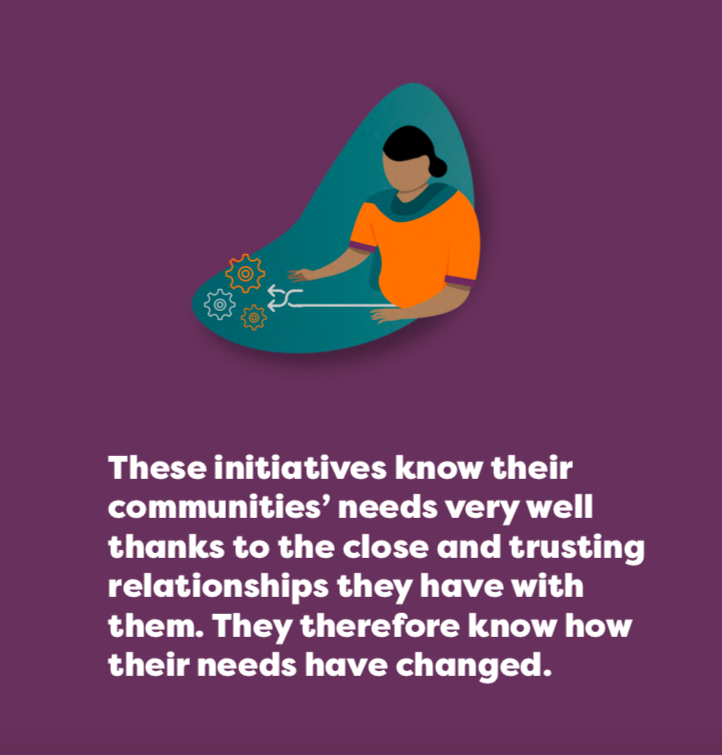
Ember finds, connects and funds excellent community-based mental health initiatives around the world. We are currently working with 15 initiatives across 12 countries. When the COVID-19 pandemic became acute, our first response was to ask them how this was affecting their work.
We learned seven important lessons from listening to what to they had to say. You can read the full report here.
1. Speed
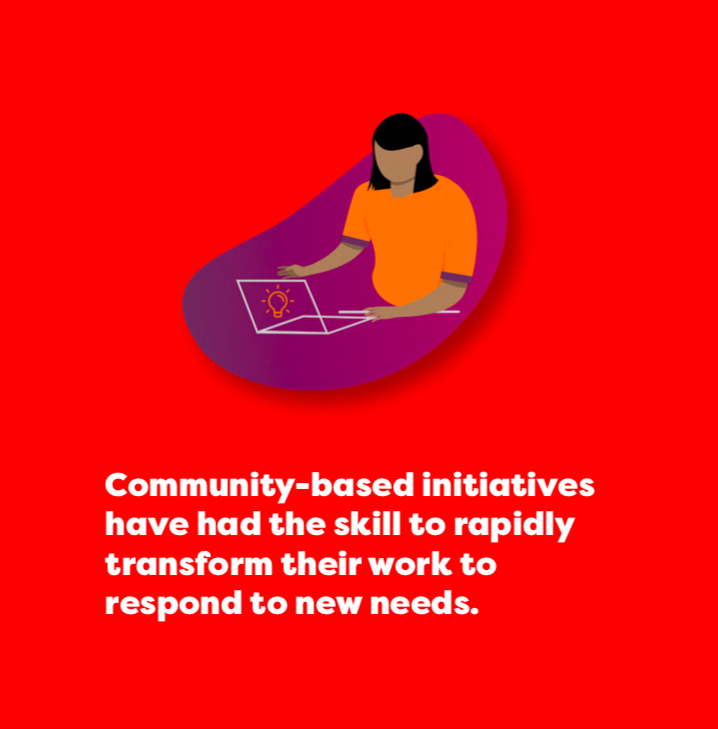
They have acted quickly and directly through close proximity to communities and dedicated teams.
Case Study
In northern India, Burans drew on their extensive community networks to rapidly double the number of volunteers within days by training and empowering young people. They used this extra capacity to spread accurate information about COVID-19 widely throughout the communities they work within.
In Zimbabwe, SPANS (Society for Pre and Post Natal Services) adapted existing plans for a future community awareness-raising project to rapidly launch a response effort focused on sharing information about COVID-19 and mental health. With a committed team of volunteers, they began by targeting the communities in which they had strong relationships and, from there, branched out to wherever the need was greatest.
2. Knowledge

They are not dealing with mental health needs in isolation. They are also being responsive to other interconnected needs at this time, such as access to food and PPE, as well as psychosocial support.
Case Study
Green String Network have exemplified this responsiveness and this openness to broadening the remit of their activity. From the early days of the pandemic’s spread, they saw how poorly accurate and relevant information about the virus was being disseminated to poor and marginalised communities. Communication and storytelling are one of their strengths so they developed tailored and accessible illustrated tools to help reach them.
They also developed a cloth mask initiative that has provided a source of income to local tailors and free, reusable masks to families in informal settlements. As the situation in Kenya has intensified, they have repeatedly spotted new needs by listening to the communities they are embedded within, then drawn on their strengths to meet them.
3. Demand
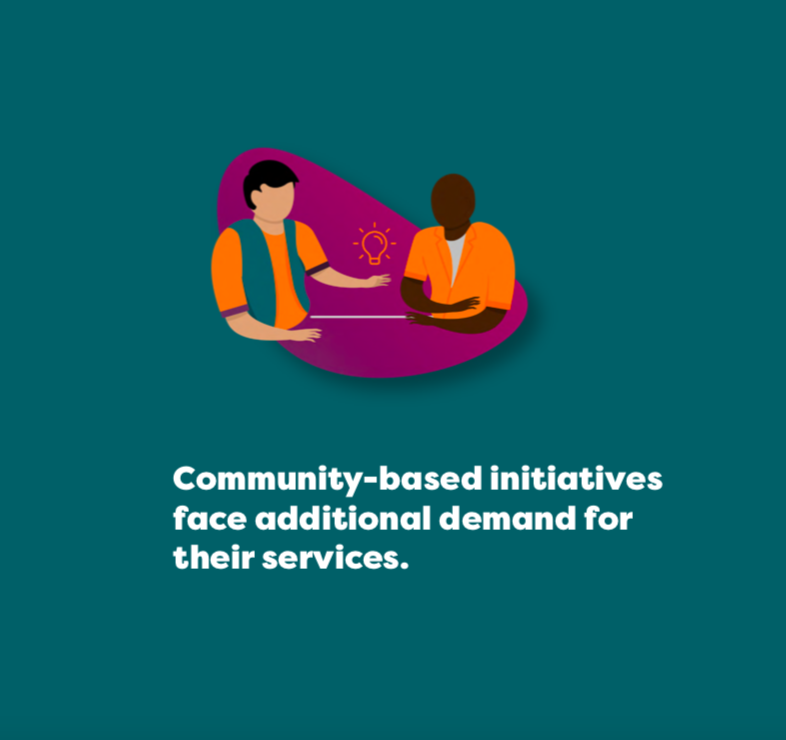
The ripple effects of the pandemic are having significant impacts on mental health. Many groups are particularly vulnerable right now, including frontline workers, victims of domestic violence and those with low or precarious incomes. These initiatives have been responding to such needs from the start.
Case Study
Afghanistan was one of the early hotspots of the pandemic, thanks in part to its proximity to Iran. The already-strained healthcare system came under intense pressure and there has been a surge in the need for mental health support for both healthcare workers and the families of Covid-19 patients.
CBMHP (Community Based Mental Health Project, by The International Assistance Mission) responded to these urgent needs by creating programmes for both populations, as well as continuing with their existing work, albeit digitally.
Additionally, CBMHP was invited to join the government’s emergency task force alongside leaders in other areas of health and humanitarian assistance to advise on the mental health dimension of the crisis. Demand for CBMHP’s time and resources therefore increased at each level of their operations, from service delivery to consultation.
4. Wellbeing
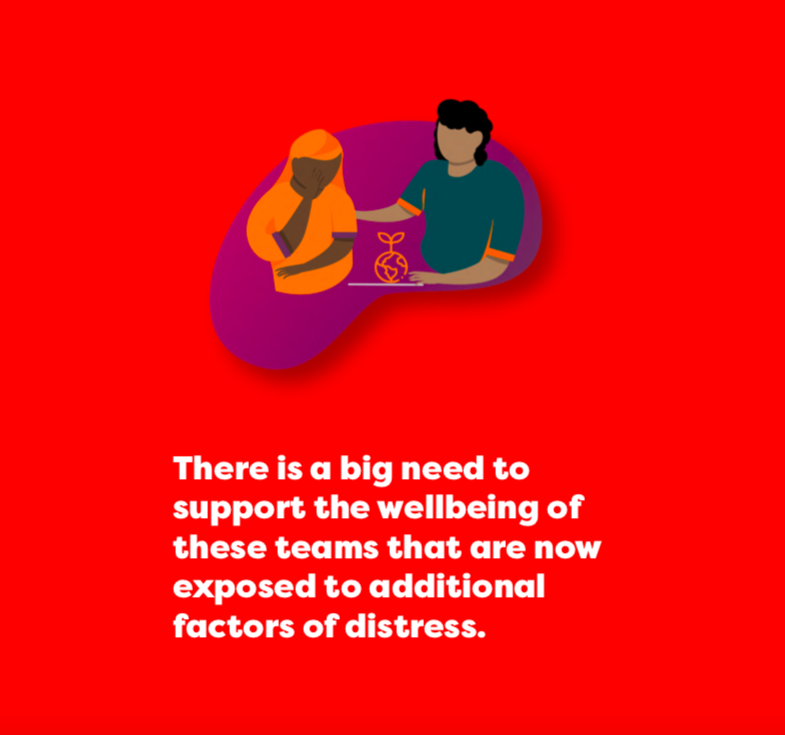
Their ability to support others and take decisions is dependent on their wellbeing. You can’t help someone else put their oxygen mask on until you’ve put on your own.
Case Study
As an advocacy organisation of mental health service users, the lockdown exposed the wellbeing of the members of MSUA (Mental Service Users’ Association - Ethiopia) to various threats.
First of all, the uncertainty related to the pandemic added to their mental distress. Moreover, being impossible to organise in-person meetings, the members experience a sense of isolation, aggravated by the fact that centres that used to provide mental health services and medications before the pandemic are now dedicated for COVID-19 related interventions.
Finally, due to poor internet and telephone coverage, digital consultations are not accessible to many service users. All these factors combine to make it difficult for the association to maintain clarity in planning and implementing its strategy. Focusing on the team’s wellbeing is therefore crucial to ensure that they can still pursue the objective of improving the mental health scenario in their country.
5. Money
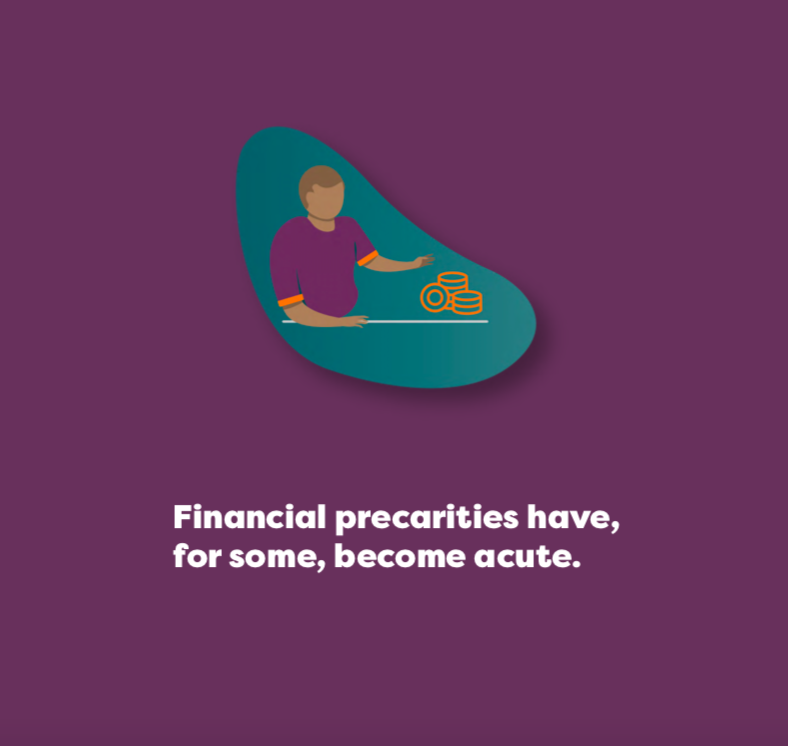
In some cases, funders have frozen or reduced funds; in others, sources of revenue from service delivery have stalled as a result of lockdown and social distancing guidelines.
Case Study
CAFS (Child Adolescent and Family Services) is a family- friendly hub in Colombo, Sri Lanka, that offers a variety of mental health services on a sliding cost scale, according to each client’s situation.
Due to lockdown, CAFS temporarily closed the hub and therefore lost the vast majority of its income overnight. In Argentina, Punto de Encuentro had been expecting the renewal of a government grant. However, the uncertainty brought by the pandemic has caused that funding to be frozen indefinitely, leaving them in a precarious and uncertain situation.
6. Pressure
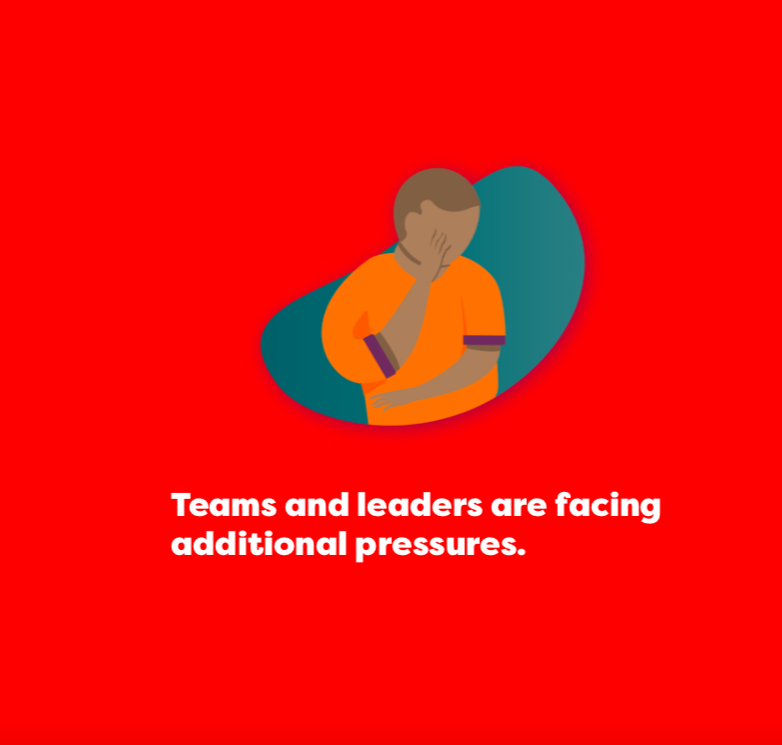
Team members have in some cases lost jobs that provide crucial sources of income. People who usually volunteer their time may be unable to do so at present. This is a stressful situation, in personal as well as professional spheres.
Case Study
For the small team behind Open Hands in Botswana, there has been a lot of pressure on the shoulders of the three team leaders. They have been providing ongoing and highly personalised support to each of the LGBTQ people in the Open Hands network, who are particularly vulnerable to becoming isolated during this time, despite challenges such as poor connectivity that have made it harder to deliver this support.
At the same time, these individuals have also been cut off from their own support networks. Two team members are also dealing with the loss of their job and the income it provided - income that has enabled their work on Open Hands.
7. Resourcefulness
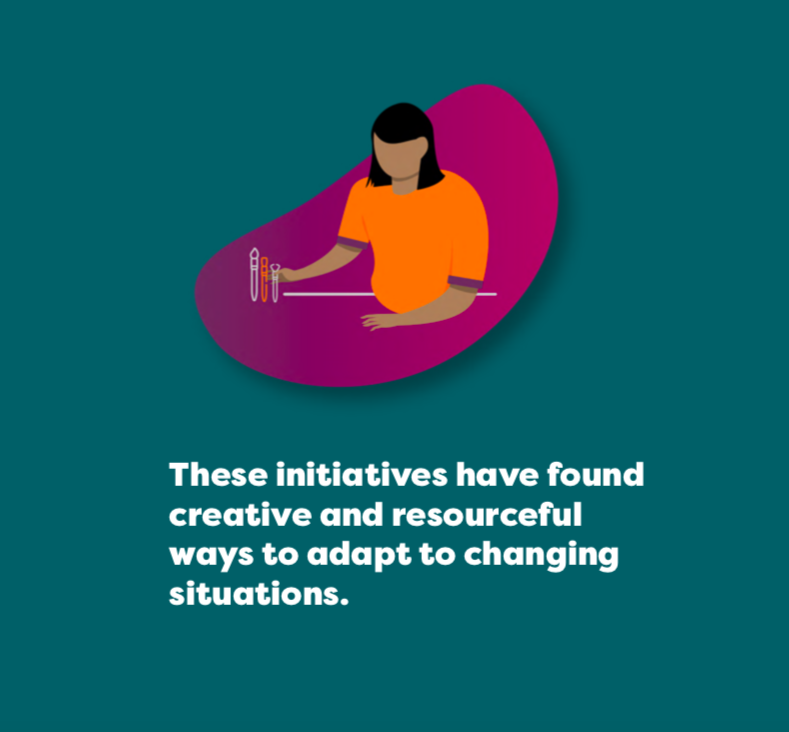
By being creative and resourceful, they can continue delivering their services and also develop ways of responding to new needs.
Case Study
Any one of the 15 initiatives Ember’s working with could be used to exemplify this. In diverse and innovative ways, each has transformed aspects of their work to overcome new challenges and find alternative ways of reaching the communities they serve.
Forum theatre is a creative, participatory methodology used by Mental Health and WellBeing on Campus (MH+WB), a project by Basic Needs Basic Rights Kenya, in their work with students at Kenyatta and Chuka Universities to generate awareness and understanding about mental ill health.
Dramatic performances that feature the relevant topic are interspersed with group discussions, interventions and revisions to generate deep, personal engagement with the subject matter. With universities closed, MH+WB have developed a digital version of forum theatre using Zoom and WhatsApp and successfully run it with students, refining the approach as they learn what works.
What lessons can we learn as funders?
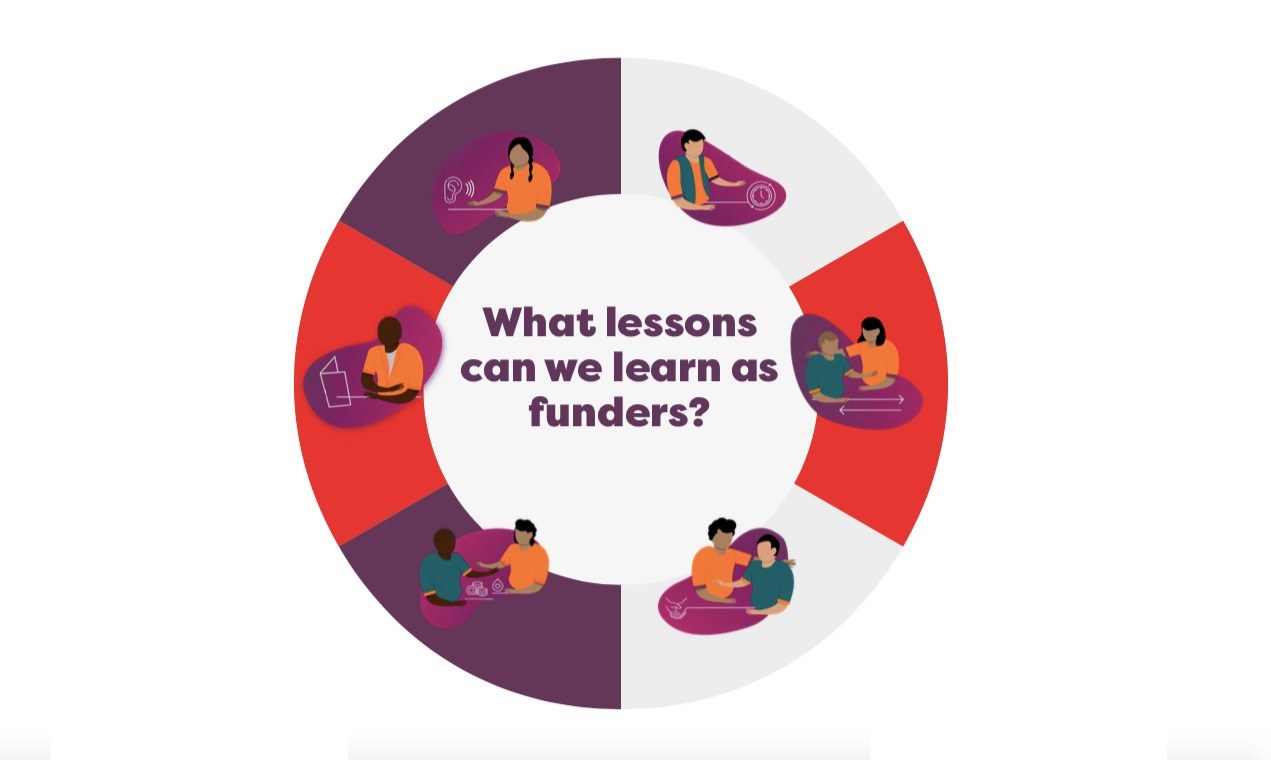
- Listen, without assuming we know what people and organisations need.
- Learn from the expertise of community-based organisations. Their intimate knowledge of community needs and targeted approaches present rich opportunities for learning in the wider global mental health sphere.
- Provide both financial and in- kind support. Neither funds nor capacity building are sufficient in themselves. The combination of both makes the biggest difference.
- Act fast. When needs are urgent, a rapid and pragmatic response is the only way to ensure an organisation’s safety and survival.
- Be flexible and responsive. If circumstances change, the approach may need to change too. This should be aided not blocked.
- Support the supporters. The wellbeing of mental health caregivers is critical to the effectiveness of their work and must be actively supported.
How has Ember put this into practice?
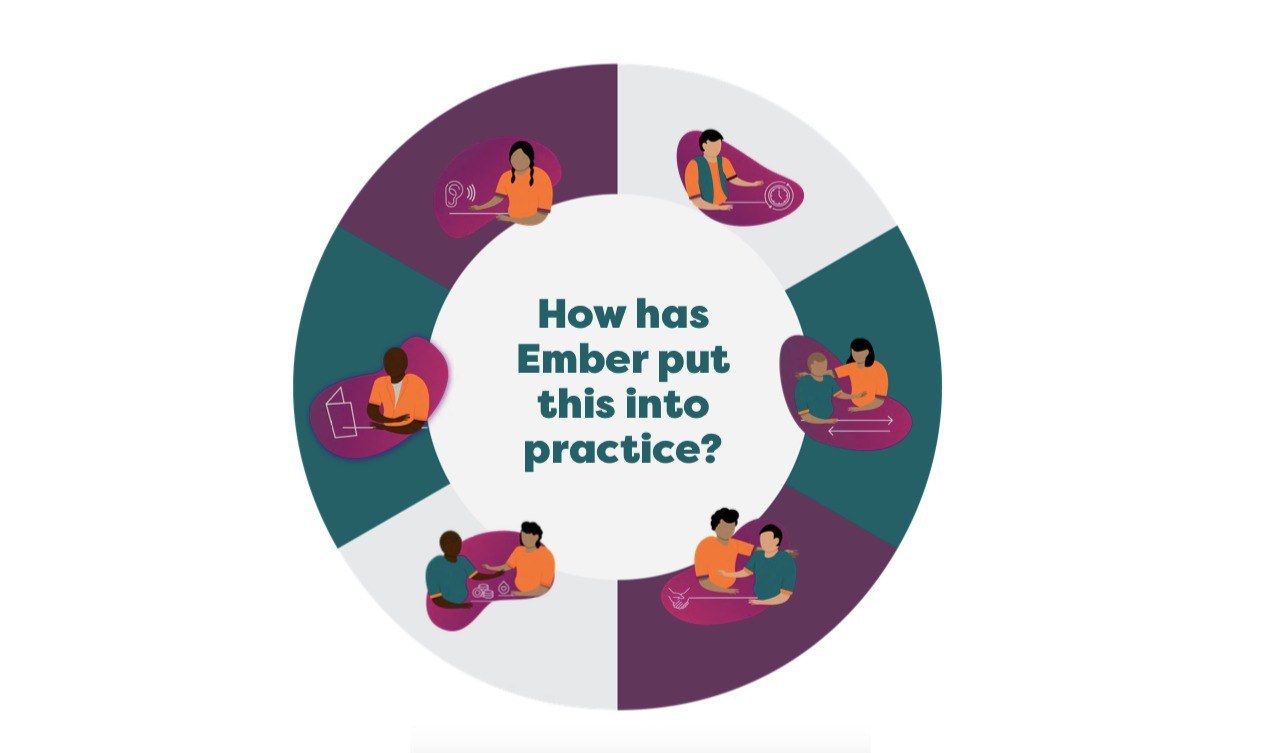
- Listen: We have had in-depth and regular conversations with all the innovators to assess their situation, needs and well-being.
- Learn from the expertise of community-based organisations: We are gathering the stories of best-practice in how these innovators have responded to the pandemic and supporting evaluation of what works. We work to improve their visibility
in the global mental health sphere through online publications, webinars and relationship-building. - Provide both financial and in-kind support: Alongside releasing the Funds, we designed and delivered a package of strategic and capacity- building support to help innovators implement their transformation plans.
- Act fast: Once we understood innovators’ needs and how their situations had changed, we released two funds to meet them. The process was simple and straightforward for innovators and these funds were unrestricted.
- Be flexible and responsive: We released a Transformation Fund to enable innovators to develop and implement alternative models where appropriate.
- Support the supporters: We released a Wellbeing Fund dedicated to supporting the physical, emotional and mental health of the innovators’ teams. We also delivered a virtual care package of workshops and individual sessions to meet the particular needs of different initiatives.
This is just the beginning...
These insights demonstrate that the COVID-19 pandemic has revealed a profound contradiction. On the one hand, community-based mental health projects live in a condition of continuous precariousness which can threaten their existence. On the other, there is an ever increasing and widespread need for the services of care they provide.
This crisis is proving how well-positioned community-based initiatives are to respond rapidly, effectively and appropriately to mental health needs. We believe this powerful grassroots ecosystem of care around the world is part of the answer to the global mental health crisis. It urgently needs support to sustain and flourish. However, the existing funding system of global mental health does not respond to the specific perspective and needs of such organisations. New and alternative approaches informed by expertise are required to provide funding and support that make a real and lasting difference.
Ember’s mission is to radically transform the funding landscape of global mental health so this ecosystem of care can grow and thrive.